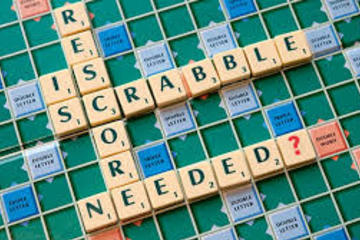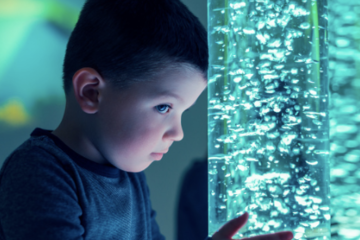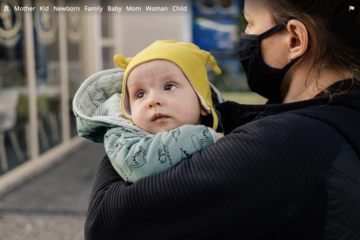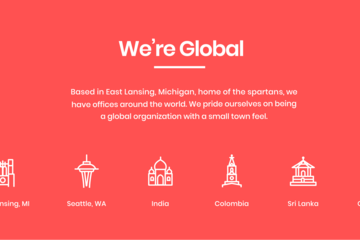We found 395 results that contain "learning"
Posted on: #iteachmsu


Communication to Support Student Learning in a Digital Learning Environment
Educator provides evidence of their understanding of communication and outlines and provides evidence of a lesson that uses technology to support students’ use of communication in learning.
Posted on: #iteachmsu


Learning scrabble
Scrabble is an easy game to learn, but an extremely difficult game to master. Take it from me — I've been playing in Scrabble tournaments since I was 16 years old, and I've competed in the past two North American Scrabble Championships
ASSESSING LEARNING
Posted on: #iteachmsu


Communication to Support Student Learning in a Digital Learning Environment
What is communication (and what isn’t it)?
The P21 framework emphasizes effective use of oral, written, and nonverbal communication skills for multiple purposes (e.g., to inform, instruct, motivate, persuade, and share ideas). It also focuses on effective listening, using technology to communicate, and being able to evaluate the effectiveness of communication efforts—all within diverse contexts (adapted from P21). Note that working in partners is a great way to collaborate or build shared understanding but a critical part of communication is sharing with an authentic audience.
The P21 framework emphasizes effective use of oral, written, and nonverbal communication skills for multiple purposes (e.g., to inform, instruct, motivate, persuade, and share ideas). It also focuses on effective listening, using technology to communicate, and being able to evaluate the effectiveness of communication efforts—all within diverse contexts (adapted from P21). Note that working in partners is a great way to collaborate or build shared understanding but a critical part of communication is sharing with an authentic audience.
ASSESSING LEARNING
Posted on: #iteachmsu


Future Learning Spaces for Learning Communities
Our combined projects can offer important contributions to the exciting and ongoing LC research within the learning sciences. As LC thinking evolves, there are new possibilities for what can be done by considering the spaces where they are situated. For example, new technologies that are reported upon in this symposium allow for distant knowledge building communities to learn from each other’s collective idea threads (see Zhang & Chen). Embedded “Wallscopes” allow students to carefully observe life cycles of multiple habitats within the walls of one classroom (see Slotta, Cober, Acosta, & Moher). Pod-like furnishings and arrangements in undergraduate physics classrooms promote active learning and community-based knowledge (see Charles, Whittaker, & Lenton). Flexible walls, easily combinable furniture, and embedded screens allow for opportunistic collaboration within an emergent-design (see Ben-Zvi, Hod, Kali, & Weiss). Finally, open technology-enabled collaborative spaces allow multiple LCs to enact their practices (see Rook, McDonald, Choi, & Tietjen). Together, these projects show how LCs can be refined by considering the way space constrain or give new opportunities to certain kinds of activities and practices.
Posted on: #iteachmsu


Communication to Support Student Learning in a Digital Learning Environment
Educator provides evidence of their understanding of communication and outlines and provides evidence of a lesson that uses technology to support students’ use of communication in learning.
Posted on: #iteachmsu

Creativity to Support Student Learning in a Digital Learning Environment
The 4Cs for 21st century learning are Creativity, Critical Thinking, Communication, and Collaboration. They are part of the framework for 21st Century Learning and are designed to support student learning in today’s world and are skills they can use in college and career.
ASSESSING LEARNING
Posted on: #iteachmsu


Creativity to Support Student Learning in a Digital Learning Env
The 4Cs for 21st century learning are Creativity, Critical Thinking, Communication, and Collaboration. They are part of the framework for 21st Century Learning and are designed to support student learning in today’s world and are skills they can use in college and career.
ASSESSING LEARNING
Posted on: #iteachmsu


Cooperative Learning
Carefully structured cooperative learning groups in which each student is assigned a role and has clear expectations for desired outcomes are very helpful for students with ADHD. The more structured the cooperative activity, the more likely it is that these students will succeed.
Posted by: Chathuri Super admin..
Disciplinary Content
Posted on: #iteachmsu

Cooperative Learning
Carefully structured cooperative learning groups in which each student is assigned a role and has clear expectations for desired outcomes are very helpful for students with ADHD. The more structured the cooperative activity, the more likely it is that these students will succeed.
Authored by: Chathu
Disciplinary Content
Posted on: #iteachmsu

Support Student Learning in a Digital Learning Environment
Educator provides evidence
of their understanding of communication and outlines and provides evidence of a lesson that uses technology to support students’ use of communication in learning.
Method Components
What are the 4Cs?
The 4Cs for 21st century learning are Creativity, Critical Thinking, Communication, and Collaboration. They are part of the framework for 21st Century Learning and are designed to support student learning in today’s world and are skills they can use in college and career.
What is communication (and what isn’t it)?
The P21 framework emphasizes effective use of oral, written, and nonverbal communication skills for multiple purposes (e.g., to inform, instruct, motivate, persuade, and share ideas). It also focuses on effective listening, using technology to communicate, and being able to evaluate the effectiveness of communication efforts—all within diverse contexts (adapted from P21). Note that working in partners is a great way to collaborate or build shared understanding but a critical part of communication is sharing with an authentic audience.
Example strategies that use technology to support communication in the classroom:
Host a TED-style conference or showcases for your students to present original ideas on a topic of interest to them to an authentic, external audience. Record and post the videos to a youtube stream.
Provide opportunities to listen and ask questions through back channel tools like Today’s Meet or even Twitter.
Have your students publish their work through blogs, by creating websites, and by building other online resources that are shared with authentic audiences.
For other ideas see the resources below.
of their understanding of communication and outlines and provides evidence of a lesson that uses technology to support students’ use of communication in learning.
Method Components
What are the 4Cs?
The 4Cs for 21st century learning are Creativity, Critical Thinking, Communication, and Collaboration. They are part of the framework for 21st Century Learning and are designed to support student learning in today’s world and are skills they can use in college and career.
What is communication (and what isn’t it)?
The P21 framework emphasizes effective use of oral, written, and nonverbal communication skills for multiple purposes (e.g., to inform, instruct, motivate, persuade, and share ideas). It also focuses on effective listening, using technology to communicate, and being able to evaluate the effectiveness of communication efforts—all within diverse contexts (adapted from P21). Note that working in partners is a great way to collaborate or build shared understanding but a critical part of communication is sharing with an authentic audience.
Example strategies that use technology to support communication in the classroom:
Host a TED-style conference or showcases for your students to present original ideas on a topic of interest to them to an authentic, external audience. Record and post the videos to a youtube stream.
Provide opportunities to listen and ask questions through back channel tools like Today’s Meet or even Twitter.
Have your students publish their work through blogs, by creating websites, and by building other online resources that are shared with authentic audiences.
For other ideas see the resources below.
Authored by: NC state
Disciplinary Content
Posted on: #iteachmsu


Support Student Learning in a Digital Learning Environment
What is communication (and what isn’t it)?
The P21 framework emphasizes the effective use of oral, written, and nonverbal communication skills for multiple purposes (e.g., to inform, instruct, motivate, persuade, and share ideas). It also focuses on effective listening, using technology to communicate, and being able to evaluate the effectiveness of communication efforts—all within diverse contexts (adapted from P21). Note that working in partners is a great way to collaborate or build shared understanding but a critical part of communication is sharing with an authentic audience.
Example strategies that use technology to support communication in the classroom:
Host a TED-style conference or showcases for your students to present original ideas on a topic of interest to them to an authentic, external audience. Record and post the videos to a youtube stream.
Provide opportunities to listen and ask questions through backchannel tools like Today’s Meet or even Twitter.
Have your students publish their work through blogs, by creating websites, and by building other online resources that are shared with authentic audiences.
For other ideas see the resources below.
https://youtu.be/KUM4AECEcUA
The P21 framework emphasizes the effective use of oral, written, and nonverbal communication skills for multiple purposes (e.g., to inform, instruct, motivate, persuade, and share ideas). It also focuses on effective listening, using technology to communicate, and being able to evaluate the effectiveness of communication efforts—all within diverse contexts (adapted from P21). Note that working in partners is a great way to collaborate or build shared understanding but a critical part of communication is sharing with an authentic audience.
Example strategies that use technology to support communication in the classroom:
Host a TED-style conference or showcases for your students to present original ideas on a topic of interest to them to an authentic, external audience. Record and post the videos to a youtube stream.
Provide opportunities to listen and ask questions through backchannel tools like Today’s Meet or even Twitter.
Have your students publish their work through blogs, by creating websites, and by building other online resources that are shared with authentic audiences.
For other ideas see the resources below.
https://youtu.be/KUM4AECEcUA
Authored by: Friday Institute at NC State
Navigating Context
Posted on: #iteachmsu


Communication to Support Student Learning in a Digital Learning Environment
Key Method
Educator provides evidence of their understanding of communication and outlines and provides evidence of a lesson that uses technology to support students’ use of communication in learning.
Method Components
What are the 4Cs?
The 4Cs for 21st century learning are Creativity, Critical Thinking, Communication, and Collaboration. They are part of the framework for 21st Century Learning and are designed to support student learning in today’s world and are skills they can use in college and career.
What is communication (and what isn’t it)?
The P21 framework emphasizes effective use of oral, written, and nonverbal communication skills for multiple purposes (e.g., to inform, instruct, motivate, persuade, and share ideas). It also focuses on effective listening, using technology to communicate, and being able to evaluate the effectiveness of communication efforts—all within diverse contexts (adapted from P21). Note that working in partners is a great way to collaborate or build shared understanding but a critical part of communication is sharing with an authentic audience.
Educator provides evidence of their understanding of communication and outlines and provides evidence of a lesson that uses technology to support students’ use of communication in learning.
Method Components
What are the 4Cs?
The 4Cs for 21st century learning are Creativity, Critical Thinking, Communication, and Collaboration. They are part of the framework for 21st Century Learning and are designed to support student learning in today’s world and are skills they can use in college and career.
What is communication (and what isn’t it)?
The P21 framework emphasizes effective use of oral, written, and nonverbal communication skills for multiple purposes (e.g., to inform, instruct, motivate, persuade, and share ideas). It also focuses on effective listening, using technology to communicate, and being able to evaluate the effectiveness of communication efforts—all within diverse contexts (adapted from P21). Note that working in partners is a great way to collaborate or build shared understanding but a critical part of communication is sharing with an authentic audience.
Authored by: Greg
Assessing Learning
Posted on: #iteachmsu


Digital Collaborative Learning for the 21st Century 2.0 (Learning Community for AY2023-2024)
Digital Collaborative Learning for the 21st Century 2.0 (Learning Community for AY2023-2024)
Authored by: 906
Disciplinary Content
Posted on: #iteachmsu


Teaching and Learning in Early Childhood Education and Care
Early education ensures free, integral and harmonious development of the child's personality, according to his rhythm and needs. The education provided has to ensure the differentiated stimulation of children, aiming the intellectual, emotional, social and physical development of each child and targeting to achieve the following results of early education (from birth to 6/7 years old):
The free, integral and harmonious development of the child's personality, according to his own pace and general needs, supporting his autonomous and creative training.
Development of the capacity to interact with other children, with adults and with the environment to acquire new knowledge, skills, attitudes and behaviours; encouraging exploration, exercises, tests and experiments, as autonomous learning experiences.
The discovery, by each child, of his/her own identity and autonomy and the development of a positive self-image.
Supporting the child in the acquisition of knowledge, abilities, skills and attitudes required for his school entry and throughout life.
All activities with young children should respect child's right to play - viewed as a form of activity, method, procedure and means of achieving educational approaches at early ages, as well as a method of stimulating the capacity and creativity of the child, as a right of him and as an opening to freedom to choose, according to his/her own needs.
The free, integral and harmonious development of the child's personality, according to his own pace and general needs, supporting his autonomous and creative training.
Development of the capacity to interact with other children, with adults and with the environment to acquire new knowledge, skills, attitudes and behaviours; encouraging exploration, exercises, tests and experiments, as autonomous learning experiences.
The discovery, by each child, of his/her own identity and autonomy and the development of a positive self-image.
Supporting the child in the acquisition of knowledge, abilities, skills and attitudes required for his school entry and throughout life.
All activities with young children should respect child's right to play - viewed as a form of activity, method, procedure and means of achieving educational approaches at early ages, as well as a method of stimulating the capacity and creativity of the child, as a right of him and as an opening to freedom to choose, according to his/her own needs.
Posted by: Chathuri Hewapathirana
Posted on: #iteachmsu


The Role of Nonclassroom Spaces in Living-Learning ... - ERIC
The coronavirus pandemic continues to hit the US economy, with another 5.2 million Amercians seeking unemployment benefits last week.
More than 20 million Americans have applied for benefits in the last month.
Economists believe that the U.S. economy contracted at its sharpest rate since World War II in the first quarter of the year.
Another 5.2 million more Americans sought unemployment benefits last week, lifting total filings for claims over the past month above an astounding 20 million, which would underscore the deepening economic slump caused by the novel coronavirus outbreak.
More than 20 million Americans have applied for benefits in the last month.
Economists believe that the U.S. economy contracted at its sharpest rate since World War II in the first quarter of the year.
Another 5.2 million more Americans sought unemployment benefits last week, lifting total filings for claims over the past month above an astounding 20 million, which would underscore the deepening economic slump caused by the novel coronavirus outbreak.
Posted by: Chathuri Hewapathirana
Posted on: #iteachmsu

Learning a new language this year? This app gets you speaking in just 3 weeks
Anyone can speak a language with Babbel, even if you’re a complete beginner who has never attempted to learn a language before. Here are 5 reasons why there’s nothing holding you back from learning a new language with Babbel.
Anyone can speak a language with Babbel, even if you’re a complete beginner who has never attempted to learn a language before. Here are 5 reasons why there’s nothing holding you back from learning a new language with Babbel.
Posted by: Greg Thomsan
Assessing Learning
Posted on: #iteachmsu

Reinforcement Learning
Reinforcement learning is a subfield of machine learning in which systems are trained by receiving virtual "rewards" or "punishments," essentially learning by trial and error. Google's DeepMind has used reinforcement learning to beat a human champion in the Go games. Reinforcement learning is also used in video games to improve the gaming experience by providing smarter bot.
One of the most famous algorithms are:
Q-learning
Deep Q network
State-Action-Reward-State-Action (SARSA)
Deep Deterministic Policy Gradient (DDPG)
Reinforcement learning is a subfield of machine learning in which systems are trained by receiving virtual "rewards" or "punishments," essentially learning by trial and error. Google's DeepMind has used reinforcement learning to beat a human champion in the Go games. Reinforcement learning is also used in video games to improve the gaming experience by providing smarter bot.
One of the most famous algorithms are:
Q-learning
Deep Q network
State-Action-Reward-State-Action (SARSA)
Deep Deterministic Policy Gradient (DDPG)
Posted by: Chathuri Super admin..
Navigating Context
Posted on: #iteachmsu
Digital Collaborative Learning for the 21st Century 2.0 (Learning Community for AY2023-2024)
https://www.youtube.com/watch?v=nMxqEkg3wQ0
This talk was a given at a local TEDx event, produced independently of the TED Conferences. Peter is a school principal with a radical solution, no school bell...
This talk was given at a local TEDx event, produced independently of the TED Conferences. Peter is a school principal with a radical solution, no school bell, no school levels, staff selection and curriculum is even decided by students. Result? No bullying, collaboration, innovation in school dynamics. Peter Hutton hated his own school experience, where he felt that education was being done “to him”. As Principal of Templestowe College he developed an educational model that allows students to individualize their education and share control in the running of the school. About TEDx, x = independently organized event In the spirit of ideas worth spreading, TEDx is a program of local, self-organized events that bring people together to share a TED-like experience. At a TEDx event, TEDTalks video and live speakers combine to spark deep discussion and connection in a small group. These local, self-organized events are branded TEDx, where x = independently organized TED event. The TED Conference provides general guidance for the TEDx program, but individual TEDx events are self-organized.* (*Subject to certain rules and regulations)
https://www.youtube.com/watch?v=nMxqEkg3wQ0
This talk was a given at a local TEDx event, produced independently of the TED Conferences. Peter is a school principal with a radical solution, no school bell...
This talk was given at a local TEDx event, produced independently of the TED Conferences. Peter is a school principal with a radical solution, no school bell, no school levels, staff selection and curriculum is even decided by students. Result? No bullying, collaboration, innovation in school dynamics. Peter Hutton hated his own school experience, where he felt that education was being done “to him”. As Principal of Templestowe College he developed an educational model that allows students to individualize their education and share control in the running of the school. About TEDx, x = independently organized event In the spirit of ideas worth spreading, TEDx is a program of local, self-organized events that bring people together to share a TED-like experience. At a TEDx event, TEDTalks video and live speakers combine to spark deep discussion and connection in a small group. These local, self-organized events are branded TEDx, where x = independently organized TED event. The TED Conference provides general guidance for the TEDx program, but individual TEDx events are self-organized.* (*Subject to certain rules and regulations)
Posted by: Chathuri Super admin..
Assessing Learning
Posted on: #iteachmsu


When asking students to explore issues of personal and social identity, teachers must provide safe spaces in which students are seen, valued, cared for, and respected. It is also important that students have opportunities to learn from one another’s varied experiences and perspectives. To create this learning environment, teachers need to skillfully draw on student experiences to enrich the curriculum.
Posted by: Chathuri Super admin..
Disciplinary Content
Posted on: #iteachmsu

ALt Text : learning: https://www.bigcommerce.com/ecommerce-answers/what-is-an-alt-tag-and-how-does-it-impact-seo/
Posted by: Chathuri Super admin..
Disciplinary Content
Posted on: #iteachmsu

The concept that computer programs can automatically learn from and adapt to new data without being assisted by humans. Deep learning techniques enable this automatic learning through the absorption of huge amounts of unstructured data such as text, images, or video.
Posted by: Rupali Jagtap
Assessing Learning
Posted on: #iteachmsu


What is an accommodation?
An accommodation is an adaptation or change to educational environments or practices that helps a student overcome the barriers, or challenges, presented by the disability. It does not change the expectations for learning or the requirements of the task.
An accommodation is an adaptation or change to educational environments or practices that helps a student overcome the barriers, or challenges, presented by the disability. It does not change the expectations for learning or the requirements of the task.
Posted by: Chathuri Super admin..
Assessing Learning
Posted on: #iteachmsu

Dialogue is more than conversation. It is also different than debates, in which someone wins and someone loses. Dialogue requires openness to new ideas and collective learning. This is not an easy practice; for students (and teachers) to engage in dialogue, they must build and exercise specific skills:
Posted by: Chathuri Super admin..
Assessing Learning
Host: MSU Libraries

Learn QGIS: Making a color shaded map in QGIS (Online)
Learn the basics of QGIS, the free open-source geospatial software—this workshop will demonstrate how to make a choropleth (color shaded) map and place graduated symbols representing data on it, load shape-files and .csv table files into QGIS, join data to spatial information and edit features. No experience with QGIS or Geographic Information Systems is required.
Navigating Context














